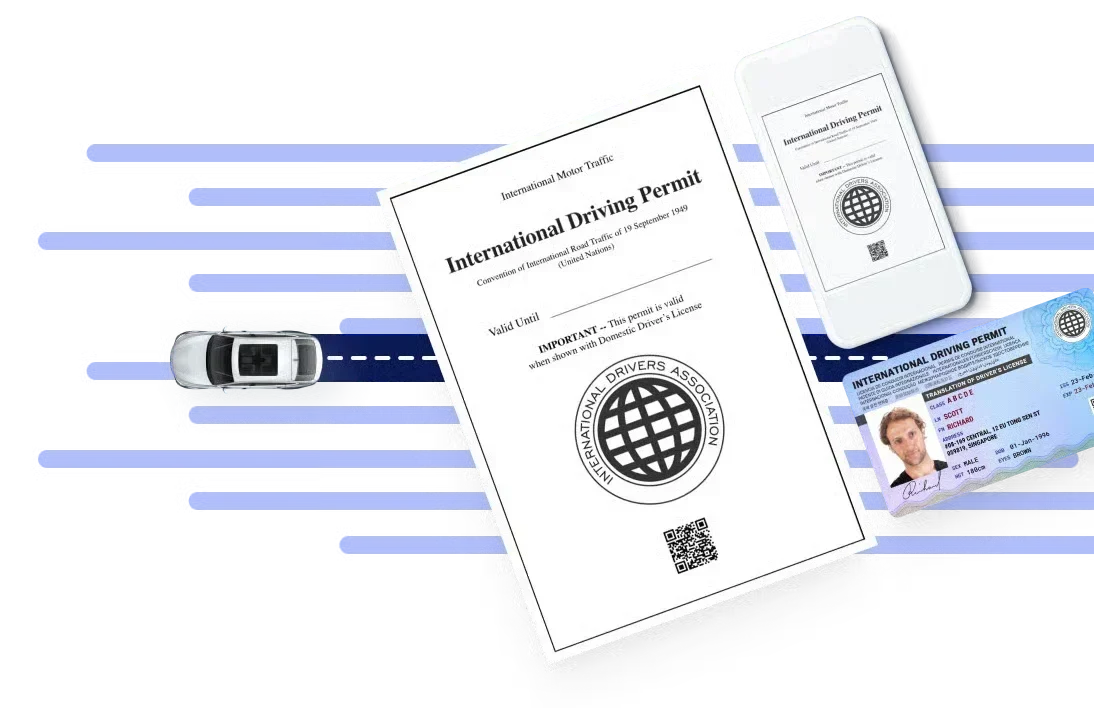Myanmar is a beautiful country in Southeast Asia, offering travelers a unique blend of ancient temples, stunning landscapes, and rich culture. This seven-day Myanmar itinerary will guide you through the best attractions and experiences, perfect for those looking to explore Myanmar in just one week. Dive into this exciting Myanmar travel guide that will take you from bustling cities to serene lakes.
Check if you need an IDP NowWhere was your license issued?
Destination
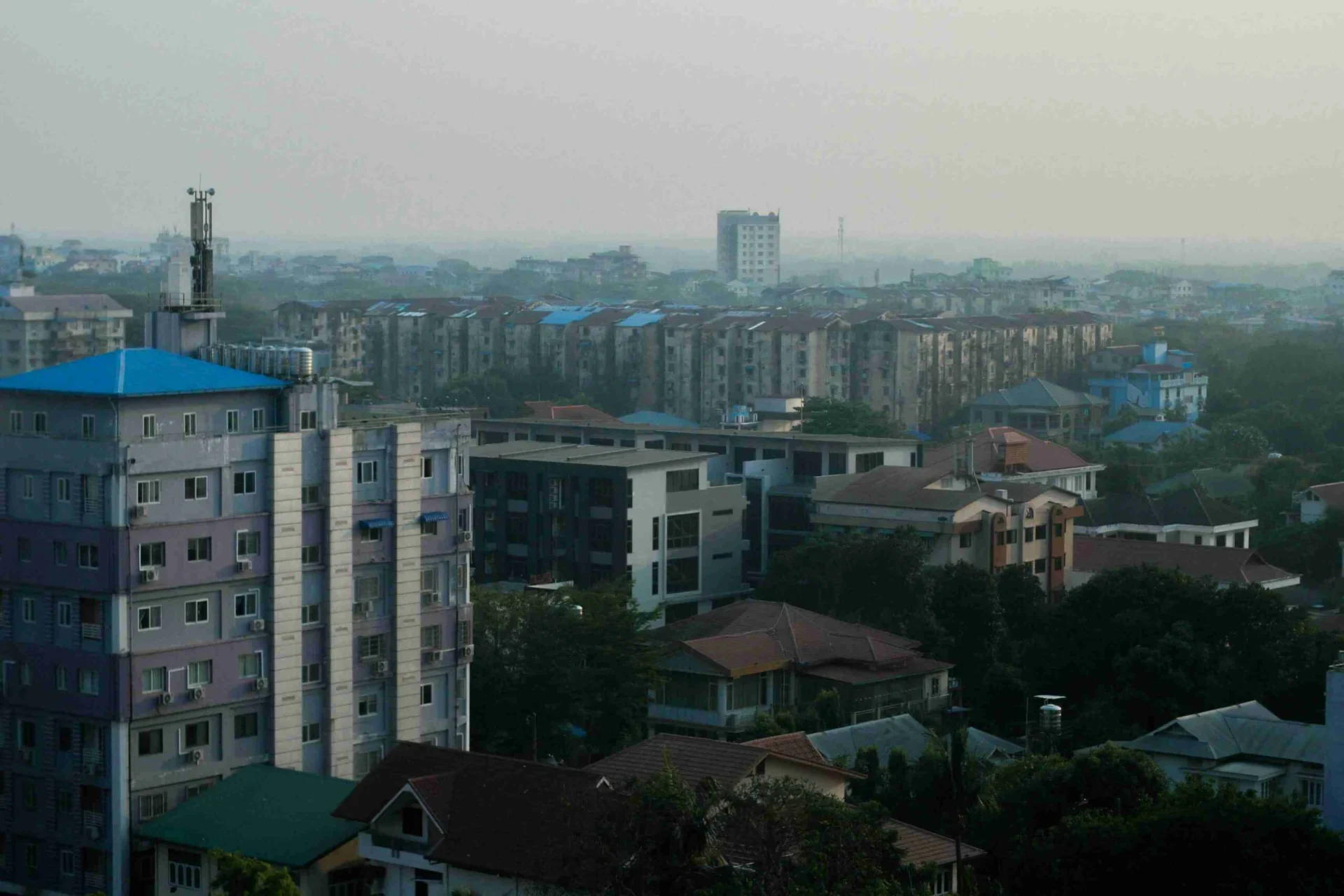
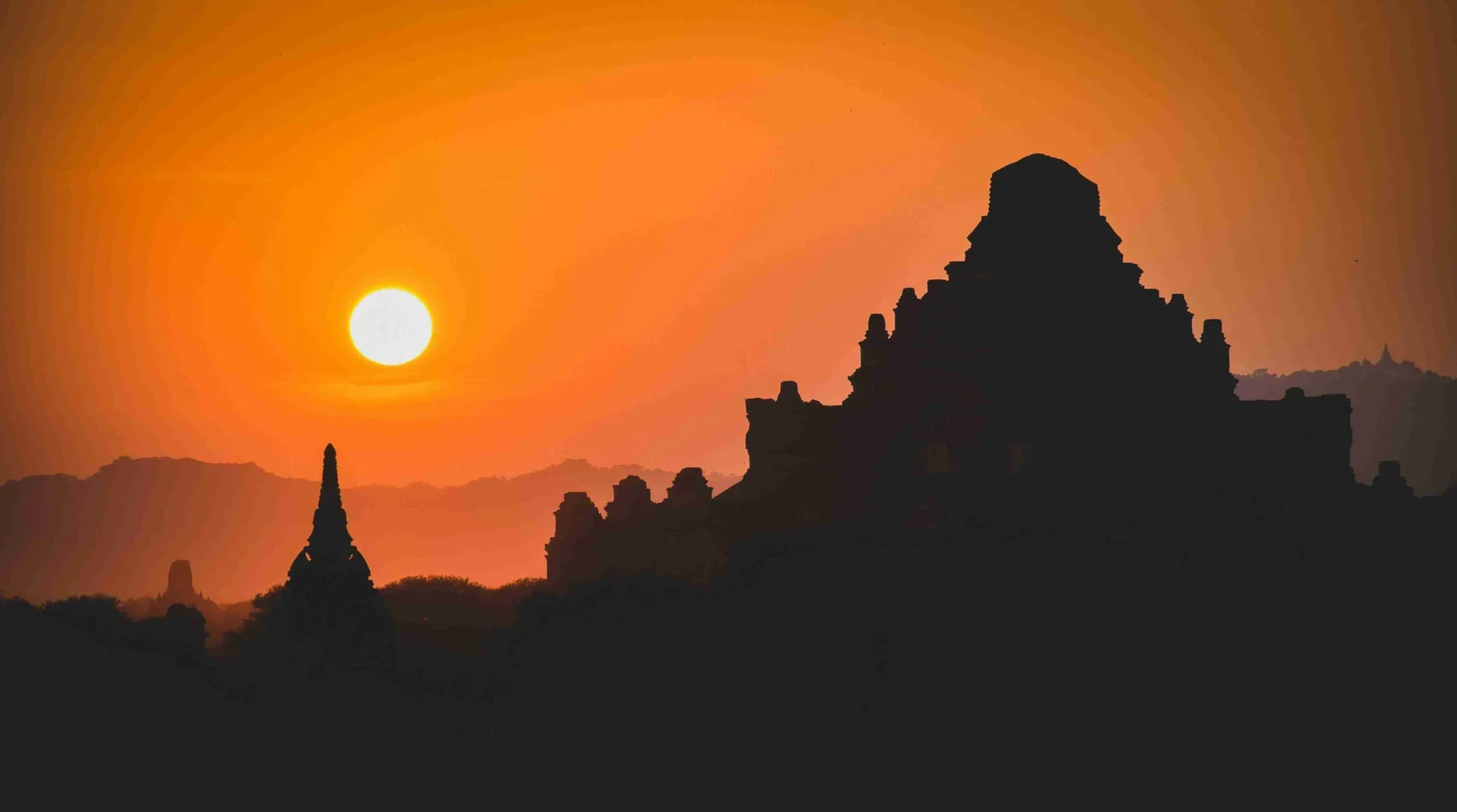
Day 1: Welcome to Yangon
Your Myanmar adventure begins in Yangon, the largest city in Myanmar. After arriving and settling into your hotel, it’s time to explore this vibrant city.
On your first day in Yangon, start by visiting the Shwedagon Pagoda, Myanmar’s most famous landmark. This golden stupa dominates the city’s skyline and is particularly impressive at sunset when its golden hues are most striking.
After that, take some time to explore downtown Yangon. Stroll around the colonial-era buildings in the city center, where the mix of British architecture and local life creates a unique atmosphere.
To cap off your day, sample some local cuisine at one of the many street stalls or local restaurants . This will give you a delicious introduction to Myanmar’s flavors and culinary traditions.
Day 2: Yangon to Bagan
By air: Approximately 1 hour
By road: Approximately 11-13 hours (distance: approximately 650 km or 404 miles)
Your second day is packed with exciting activities as you transition from Yangon to Bagan. Start by booking the earliest flight possible to Bagan, maximizing your time in this ancient city.
Upon arrival, rent an e-bike—it’s the most efficient way to explore Bagan’s vast temple complex. Spend the day zipping between temples, marveling at the intricate architecture and rich history.
As the day winds down, find a perfect spot to watch the sunset. The temple-studded plains of Bagan offer a breathtaking backdrop for sunset viewing. While Shwesandaw Pagoda is a popular choice, there are many other less crowded options to choose from.
This magical end to your day will leave you in awe of Bagan’s beauty and eager for more exploration tomorrow.
Day 3: Bagan Exploration
Dedicate this full day to exploring more of Bagan’s incredible temples and pagodas. If you’re visiting during the ballooning season (October to April), start your day with a breathtaking hot-air balloon ride over Bagan.
While it’s pricey, the unforgettable views make it worth the splurge. After landing, visit key temples like Ananda Temple, known for its architectural beauty, and Dhammayangyi Temple, the largest temple in Bagan.
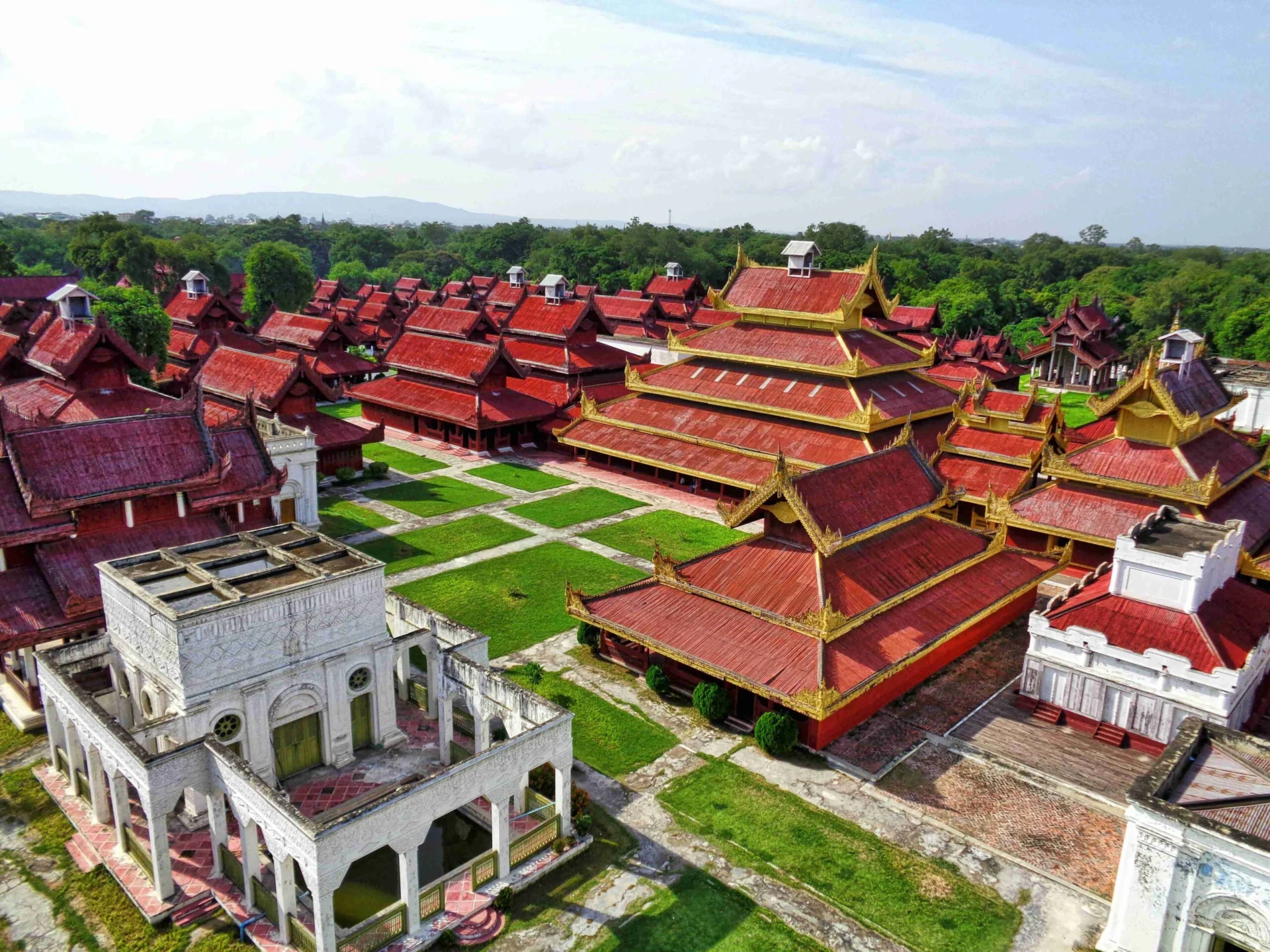
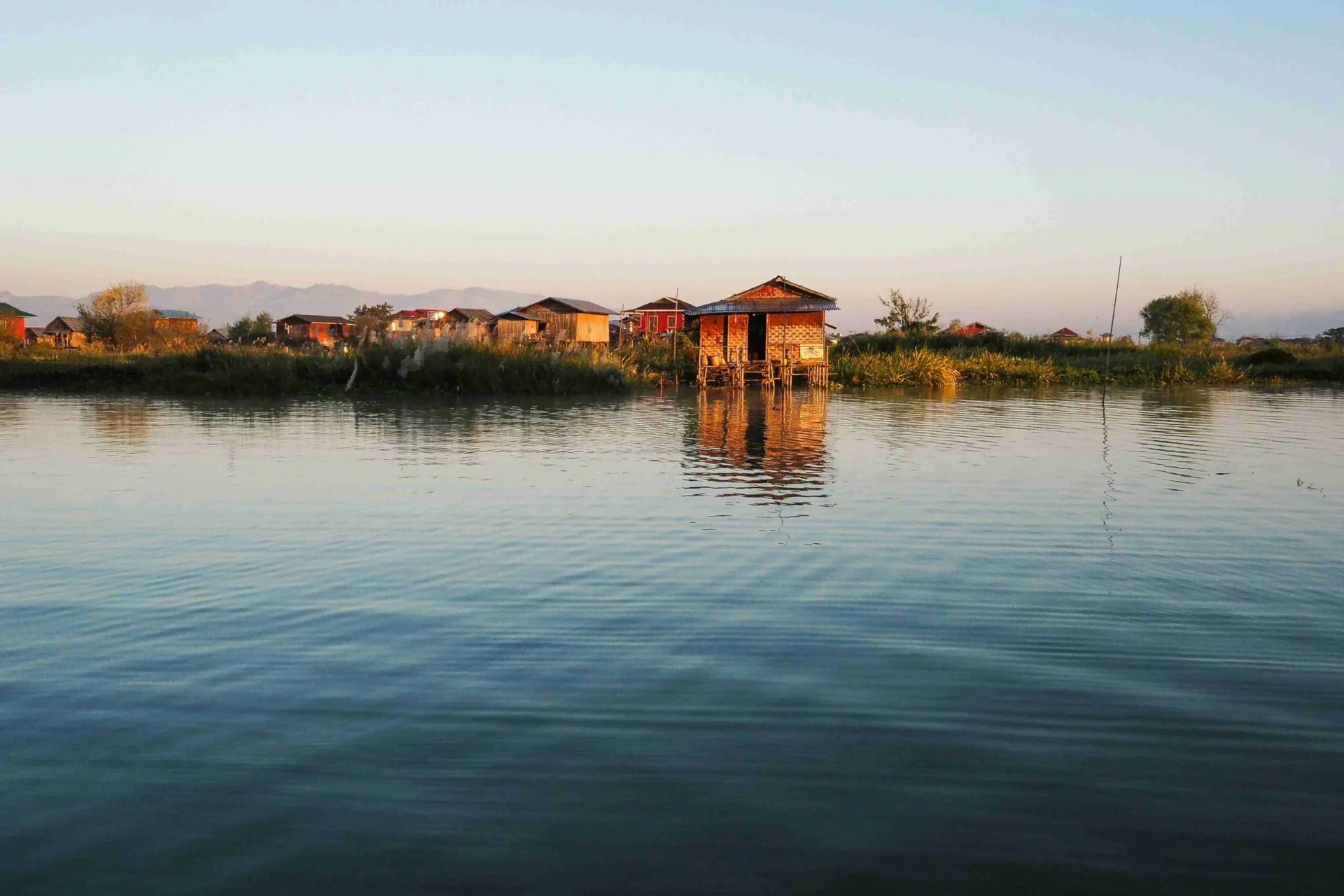
Take time to explore both Old Bagan and New Bagan to get a full picture of the city’s history and present. The contrast between the ancient structures and the more modern areas provides insight into how Bagan has evolved over time.
As you wander through the temple-studded landscape, you’ll understand why Bagan is considered one of Myanmar’s most captivating destinations.
Day 4: Bagan to Mandalay
By air: Approximately 1 hour
By road: Approximately 9-12 hours (distance: approximately 600-700 km or 373-435 miles)
Today marks your journey to Mandalay, Myanmar’s second-largest city and former royal capital. You have the option to fly or take a bus, depending on your budget and travel preferences. Upon arrival, make your way to Mandalay Hill, where you can enjoy panoramic views of the city and witness a spectacular sunset.
As evening falls, immerse yourself in the lively atmosphere of the night market. Here, you can sample local snacks and browse for souvenirs, providing a perfect end to your day and a taste of Mandalay’s vibrant culture.
Day 5: Mandalay Exploration
Your fifth day is spent exploring Mandalay’s fascinating attractions. Begin your day early with a visit to U Bein Bridge , famously known as the world’s longest teak bridge. The sight of the bridge at sunrise is particularly breathtaking.
Next, make your way to Kuthodaw Pagoda, often referred to as the “world’s largest book” due to its 729 marble slabs inscribed with Buddhist teachings. Continue your journey through history by exploring the restored Mandalay Palace complex, which provides valuable insights into Myanmar’s royal past.
Conclude your day at the Mahamuni Buddha Temple, an important pilgrimage site housing a highly revered Buddha image. This full-day tour offers a comprehensive look at Mandalay’s cultural and historical landmarks, each offering its own unique perspective on the city’s rich heritage.
Day 6: Mandalay to Inle Lake
By air: Approximately 1 hour
By road: Approximately 7-9 hours (distance: approximately 200 km or 124 miles)
On your sixth day, you’ll journey to Inle Lake, one of Myanmar’s most scenic destinations. Begin by catching a morning flight to Heho, the closest airport to the lake. From there, you’ll transfer to Nyaung Shwe, the gateway town to Inle Lake, which is about an hour’s drive from Heho airport.
Once you’ve settled in, spend your afternoon on a captivating boat tour of Inle Lake . This excursion offers a chance to witness the unique sights of the lake, including the famous leg-rowing fishermen demonstrating their distinctive technique, the fascinating floating gardens where locals cultivate crops on the water’s surface, and the charming stilt houses that seem to hover above the lake.
This day provides an immersive experience of the distinctive lifestyle and breathtaking natural beauty of Inle Lake.
Day 7: Inle Lake and Return to Yangon
On your final day, maximize your time at Inle Lake before heading back to Yangon. If your visit aligns with the rotating market days, start your morning early to experience the vibrant colors and bustling energy of the local market.
If time permits, consider a side trip to Indein, where you can explore an atmospheric complex of ancient pagodas. This historic site offers a glimpse into Myanmar’s rich religious heritage. In the afternoon, catch a flight back to Yangon for your onward journey.
This last day allows you to soak in the final moments of Inle Lake’s unique charm while preparing for your departure, ensuring you leave Myanmar with lasting memories of its diverse landscapes and cultural treasures.
Tips for Your Myanmar Trip
To ensure a smooth and enjoyable trip to Myanmar, consider the following essential tips:
Best time to visit Myanmar
Timing your visit is crucial when planning a trip to Myanmar. The best time to explore this beautiful country is during the dry season, which spans from October to March. During these months, you’ll experience pleasant temperatures and minimal rainfall, which are ideal for sightseeing and outdoor activities.
However, be aware that this period also coincides with the peak tourist season. As a result, popular destinations can get crowded, and accommodation prices may surge. To avoid disappointment, it’s advisable to book your accommodations well in advance, especially if you’re planning to visit major tourist hotspots like Bagan or Inle Lake.
Transportation in Myanmar
Understanding Myanmar’s transportation options can greatly enhance your travel experience.
Domestic flights are the most efficient way to cover long distances, saving you valuable time on your journey. They’re particularly useful for traveling between major cities like Yangon, Mandalay, and Heho (for Inle Lake).
Check if you need an IDP NowWhere was your license issued?
Destination
On the other hand, you can rent a car to explore the country’s best. However, you can only do this if you have an International Driver’s License (IDL). To secure yours now, visit the page .
However, if you’re on a tighter budget or prefer a more immersive travel experience, buses are a viable alternative. While cheaper, bus journeys can be lengthy and may involve overnight travel on some routes.
Train travel, while offering a unique perspective of the countryside, can be unreliable and is generally slower than other options. Consider your priorities—time, budget, or experience—when choosing your mode of transportation.
Dress code
Respecting the local dress code is an important aspect of cultural sensitivity in Myanmar. The country has a conservative culture, particularly evident at religious sites such as temples and pagodas.
It’s essential to dress modestly, ensuring that your shoulders and knees are covered. This applies to both men and women. Loose, breathable clothing not only adheres to local customs but also provides comfort in Myanmar’s often warm climate.
When visiting religious sites, it’s also customary to remove shoes and socks, so wearing easily removable footwear can be convenient.
Money matters
Managing your money wisely is crucial in Myanmar, which remains largely a cash-based society. While credit cards are accepted in some high-end establishments in major cities, you’ll need cash for most transactions.
It’s advisable to bring new, crisp US dollars to exchange for the local currency, kyat. Ensure your dollars are in perfect condition, as even slightly damaged notes may be rejected.
While ATMs are becoming more common in tourist areas, they can be unreliable and may not always work with international cards. It’s best to carry enough cash to cover your expenses, especially when traveling to more remote areas.
Respect local customs
Showing respect for local customs goes a long way in Myanmar. One of the most important customs to remember is removing your shoes and socks before entering temples or someone’s home. This is a sign of respect and cleanliness.
Additionally, it’s customary to give a small donation when visiting temples. This contribution helps with the upkeep of these sacred sites and is appreciated by the local community. Always ask for permission before taking photos of people, especially monks and nuns.
Stay hydrated
Staying hydrated is crucial in Myanmar’s tropical climate. The country can be extremely hot, particularly during the dry season. Always carry a water bottle with you and drink up regularly, even if you don’t feel thirsty.
Many restaurants and guesthouses offer free water refills, so take advantage of these to stay hydrated. Also, be cautious of tap water and opt for bottled or purified water to avoid any stomach issues.
Learn basic phrases
Learning a few basic phrases in Burmese can significantly enhance your travel experience.
While English is spoken in tourist areas, knowing simple greetings and expressions in the local language can help you connect with locals and show respect for their culture.
Common phrases like “mingalabar” (hello), “jezu tin ba de” (thank you), and “lah?” (a polite particle added to the end of sentences) can go a long way in building rapport and showing your interest in the local culture.
Be flexible
Flexibility is key when traveling in Myanmar. While having an itinerary is helpful, be prepared for changes and unexpected situations. Myanmar’s infrastructure is still developing, and delays can occur in transportation or services.
Embracing these challenges as part of the adventure can lead to unique experiences and interactions. Keep an open mind, and you might discover hidden gems or create memorable moments that weren’t part of your original plan.
By keeping these tips in mind, you’ll be well-prepared to navigate the unique aspects of traveling in Myanmar. Remember, patience and a positive attitude will enhance your journey, allowing you to fully appreciate the country’s rich culture and warm hospitality.
Extending Your Stay in Myanmar
If your schedule allows, consider extending your stay to two weeks in Myanmar. This will allow you to explore this diverse country more comprehensively. A longer visit enables you to delve deeper into each location, providing ample time to fully appreciate the intricacies of the temples and immerse yourself in local culture.
You could also expand your itinerary to include new destinations such as Hpa-An, renowned for its stunning karst landscape and mysterious caves, or Ngapali Beach, perfect for those seeking a relaxing coastal retreat. For a unique perspective of the country, consider taking a leisurely river cruise between Bagan and Mandalay.
This extended itinerary allows for a more relaxed pace, giving you the opportunity to discover hidden gems and gain a richer understanding of Myanmar’s multifaceted beauty and cultural heritage.
Concluding Thoughts
Myanmar is full of surprises and hidden gems. While this seven-day Myanmar itinerary covers the main highlights, there’s always more to discover. Each destination offers unique experiences, from the bustling streets of Yangon to the tranquil waters of Inle Lake.
Remember, travel in Myanmar can sometimes be challenging, but it’s also incredibly rewarding. The warm hospitality of the Myanmar people, the stunning landscapes, and the rich cultural heritage make it a truly unforgettable destination. So pack your bags, bring your sense of adventure, and get ready for an amazing week in Myanmar!
Frequently Asked Questions (FAQs)
Do I need a visa to visit Myanmar?Most visitors to Myanmar require a visa. You can apply for an e-visa online before your trip, which is valid for 28 days. Some nationalities may be eligible for visa-on-arrival, but it’s best to check the latest requirements with Myanmar’s official immigration website.
Is it safe to travel in Myanmar?While many areas in Myanmar are safe for tourists, some regions have travel restrictions due to ongoing conflicts. Always check your government’s travel advisories before your trip and stick to well-traveled tourist routes.
What is the currency in Myanmar, and can I use credit cards?The local currency is the Myanmar Kyat (MMK). While some high-end establishments in major cities accept credit cards, Myanmar is largely a cash-based society. It’s advisable to carry enough cash, preferably in US dollars, to exchange.
Are there any health precautions I should take before traveling to Myanmar?It’s recommended to be up-to-date on routine vaccinations. Depending on your itinerary, your doctor might suggest vaccines for hepatitis A, typhoid, and Japanese encephalitis. Malaria prevention might also be necessary for some areas.
What’s the internet and mobile phone connectivity like in Myanmar?Wi-Fi is available in most hotels and some restaurants in major tourist areas, but the connection can be slow. You can buy a local SIM card for mobile data, which is often more reliable than Wi-Fi.
Can I drink the tap water in Myanmar?It’s not recommended to drink tap water in Myanmar. Stick to bottled or purified water, and be cautious with ice in drinks.
What’s the etiquette for visiting Buddhist temples in Myanmar?Besides dressing modestly and removing shoes, it’s important to walk clockwise around stupas and avoid pointing your feet towards Buddha images. Women should not touch or hand anything directly to monks.
Is it possible to trek or hike in Myanmar?Yes, there are several trekking opportunities in Myanmar, particularly around Kalaw and Hsipaw. These range from day hikes to multi-day treks, often with homestays in local villages.
What’s the food like in Myanmar?Myanmar cuisine is diverse, with influences from neighboring countries. Rice is a staple, often served with meat or fish curries, soups, and salads. Some popular dishes include mohinga (fish soup with rice noodles) and tea leaf salad.
What’s the best way to get around cities in Myanmar?In cities like Yangon, taxis are common and relatively cheap. In smaller towns, trishaws (cycle rickshaws) are popular. Grab (similar to Uber) is available in some cities. Always agree on the price before starting your journey.

